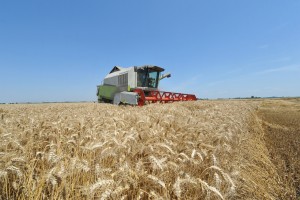 Since the beginning the United States, farm subsidies have been a core part of agricultural policy. However, the purposes and reasoning behind farm subsidies have radically changed over the course of our history. Today, only about .1% of the population work on farms, and less than 1% work in agriculture at all. However, when the country began, nearly half of the population needed to work in agriculture, in order to keep the entire country fed. This means that the policy surrounding farm subsidies has had to adapt to this changing landscape. Here is some information to help you understand the modern farm subsidy situation…
Since the beginning the United States, farm subsidies have been a core part of agricultural policy. However, the purposes and reasoning behind farm subsidies have radically changed over the course of our history. Today, only about .1% of the population work on farms, and less than 1% work in agriculture at all. However, when the country began, nearly half of the population needed to work in agriculture, in order to keep the entire country fed. This means that the policy surrounding farm subsidies has had to adapt to this changing landscape. Here is some information to help you understand the modern farm subsidy situation…
The basic concept
Essentially, the basic concept of farm subsidies is that farmers are supported by government funds, in order to keep their farms operating. These subsidies, nowadays, are dependent upon the prices of each crop that is produced on the farm. In order to qualify for subsidies, farms must abide by certain health and sustainability standards set up by the government.
History of farm subsidies in the U.S.
At the start of our country, the goal of agricultural policy was to help get families set up in farms to increase the output of the farming sector. A great example of this would be the Homestead Act, where families were given large plots of land in the Western United States to start farms on in 1820. This policy goal continued until early on in the 20th century, when the Great Depression forced Franklin Deleanor Roosevelt’s administration to rethink the purpose of agricultural policy. This led the government to find ways to help regulate supply and demand to prevent food prices from becoming too expensive, and farmers from losing too much money.
Price supports
As stated above, the effect that an unstable market could have on food prices could be catastrophic, and the government needed a way to help control these shifting levels of supply and demand. One way this was attempted was in 1933, when FDR created the Agricultural Adjustment Administration. The AAA, as it is known, tried to help farmers from losing too much money during the Great Depression by destroying crops, which caused food prices to rise. However, this is often seen as a drastic move, and was eventually struck down by the Supreme Court for being unconstitutional. However, nowadays, price supports are done by creating certain prices for crops that will always be paid for. For example, if a unit of food is set at $4 by the government, but the market price drops to $3, then the farmer will be compensated the missing $1 through farm subsidies.
This article is continued in part 2.


Leave a Comment